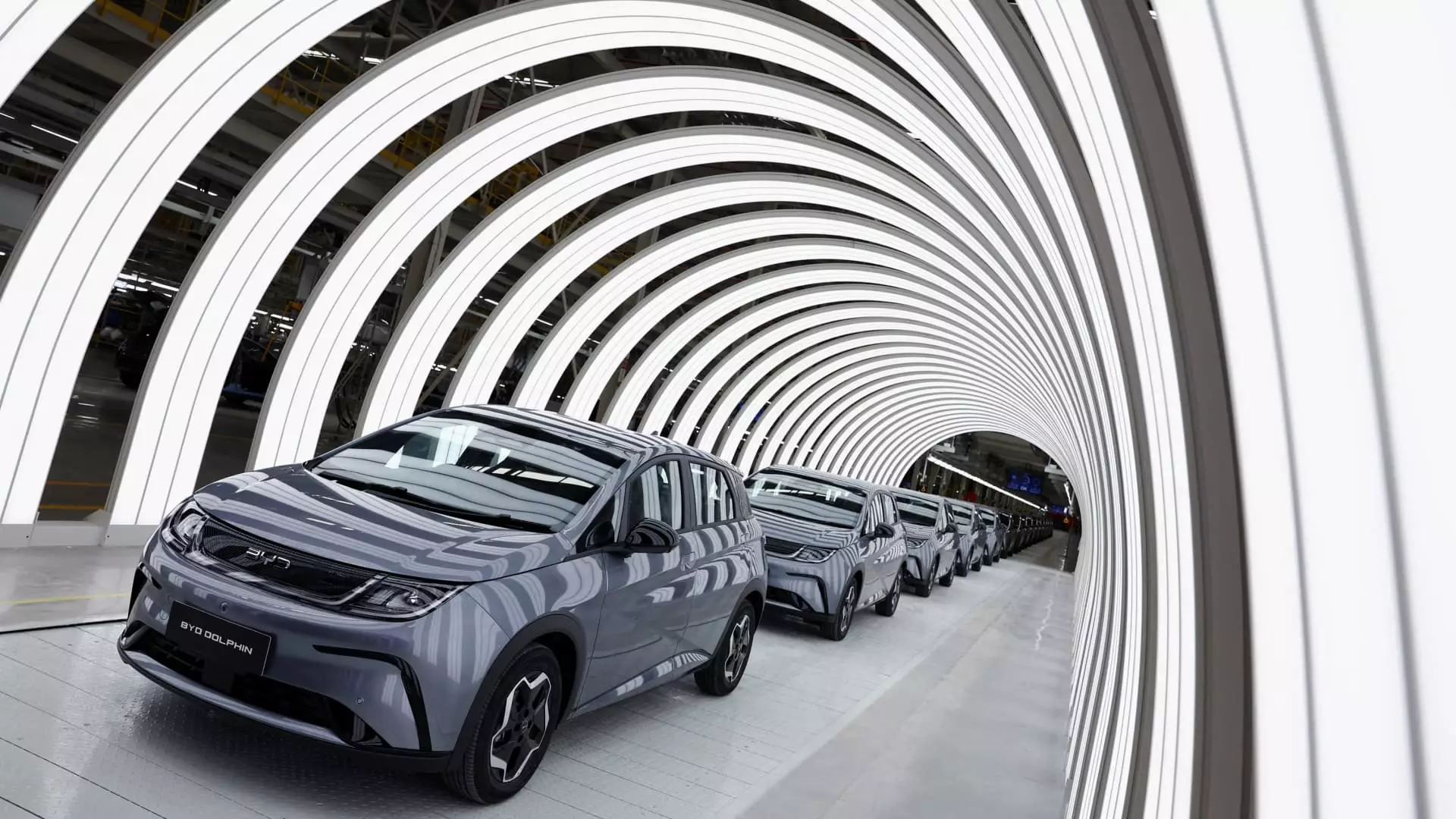The electric vehicle market is undergoing a seismic shift, and at the forefront of this transformation is BYD, a significant player in the automotive sector known for integrating innovative technologies into its electric cars. The recent launch of its driver-assistance system has not only propelled the company’s stock to new heights but has also signaled a wider trend among automotive suppliers and manufacturers aiming to adapt to the rapidly advancing world of smart driving.
BYD’s commitment to developing driver-assistance systems marks a crucial step in cementing its position within the electrified automotive landscape. The automaker made headlines recently with the debut of a driver-assistance system that spans a variety of its models, including more affordable vehicles priced at less than 70,000 yuan (approximately $9,600). By integrating sophisticated artificial intelligence capabilities from firms like DeepSeek, BYD is moving boldly to enhance the driver and passenger experience. This strategic move is expected to foster growth among its suppliers, as it proliferates demand for advanced automotive components.
Industry analysts from Nomura anticipate that suppliers involved in the production of driver-assist technologies could thrive amid BYD’s ambitious rollout. They argue that other manufacturers will likely feel pressure to upgrade their smart driving functionalities to keep pace with competitors. This potential ripple effect will only serve to heighten the demand for related technologies across the wider automotive market.
Several companies stand to gain from BYD’s new driver-assist systems, particularly those already in the business of producing essential components. Among these, BYD Electronics, a subsidiary of the automaker, specializes in manufacturing autonomous driving parts. In addition, chipmaker Horizon Robotics and lidar technology provider Hesai Tech are poised to benefit significantly. Lidar, which uses laser technology to map surroundings in 3D, is critical for the efficacy of BYD’s driver-assist features, further illustrating the interconnected nature of the growing smart driving ecosystem.
Analysts have expressed optimism regarding Horizon Robotics. Goldman Sachs, for instance, raised its price target for the company, showing confidence in its ability to capitalize on the burgeoning market for smart driving technologies. The Journey 6 series of chipsets, which are expected to play a significant role in revenue generation for the company, represent a major competitive advantage in this landscape.
As BYD solidifies its presence in the driver-assistance realm, other manufacturers are scrambling to enhance their offerings to avoid falling behind. Tesla, a longstanding leader in electric vehicles, experienced a notable dip in shares following news of BYD’s advancements. This shift in dynamics highlights an increasingly competitive atmosphere in China’s electric vehicle market, primarily spurred by advancements in driver-assistance technologies.
The implications of rising competition go beyond mere shareholder sentiment. They reflect deep-rooted changes in consumer expectations for smart driving capabilities. As more companies introduce advanced features into their vehicles, consumers may begin to view them as essential rather than optional, forcing every player in the market to adapt or risk losing market share.
As the industry gears up for this new epoch in transportation, BYD’s strategic maneuvers such as its deployment of the “Dipilot” system illustrate a broader vision of the future of electric vehicles. The system’s tiered approach, which incorporates various components depending on the model’s price point, emphasizes both accessibility and cutting-edge technology.
Moreover, with over 3 million BYD vehicles set to incorporate advanced driver-assistance systems this year, the financial outlook for suppliers is promising. Each vehicle’s advanced features can significantly elevate revenue for component manufacturers, establishing a lucrative market for these essential technologies. Hesai Tech’s lidar sensors are crucial in enabling high-level driver-assist functionalities, and analysts remain hopeful despite any external challenges the company might face.
High-stakes competition and technological advancements pave the way for innovation in vehicle safety and convenience, with BYD leading the charge. The success of this initiative could serve as a template for other manufacturers, ultimately encouraging the transition toward autonomous driving technology and further enriching the ecosystem of electric vehicle suppliers.
As BYD sets the bar for integrating driver-assistance systems into its product offerings, the implications reach well beyond the company’s models. They resonate across the industry, compelling manufacturers to reassess their strategies and adapt quickly to remain relevant in an evolving, competitive landscape. The era of smart driving has arrived, and the industry is on the brink of revolution.

